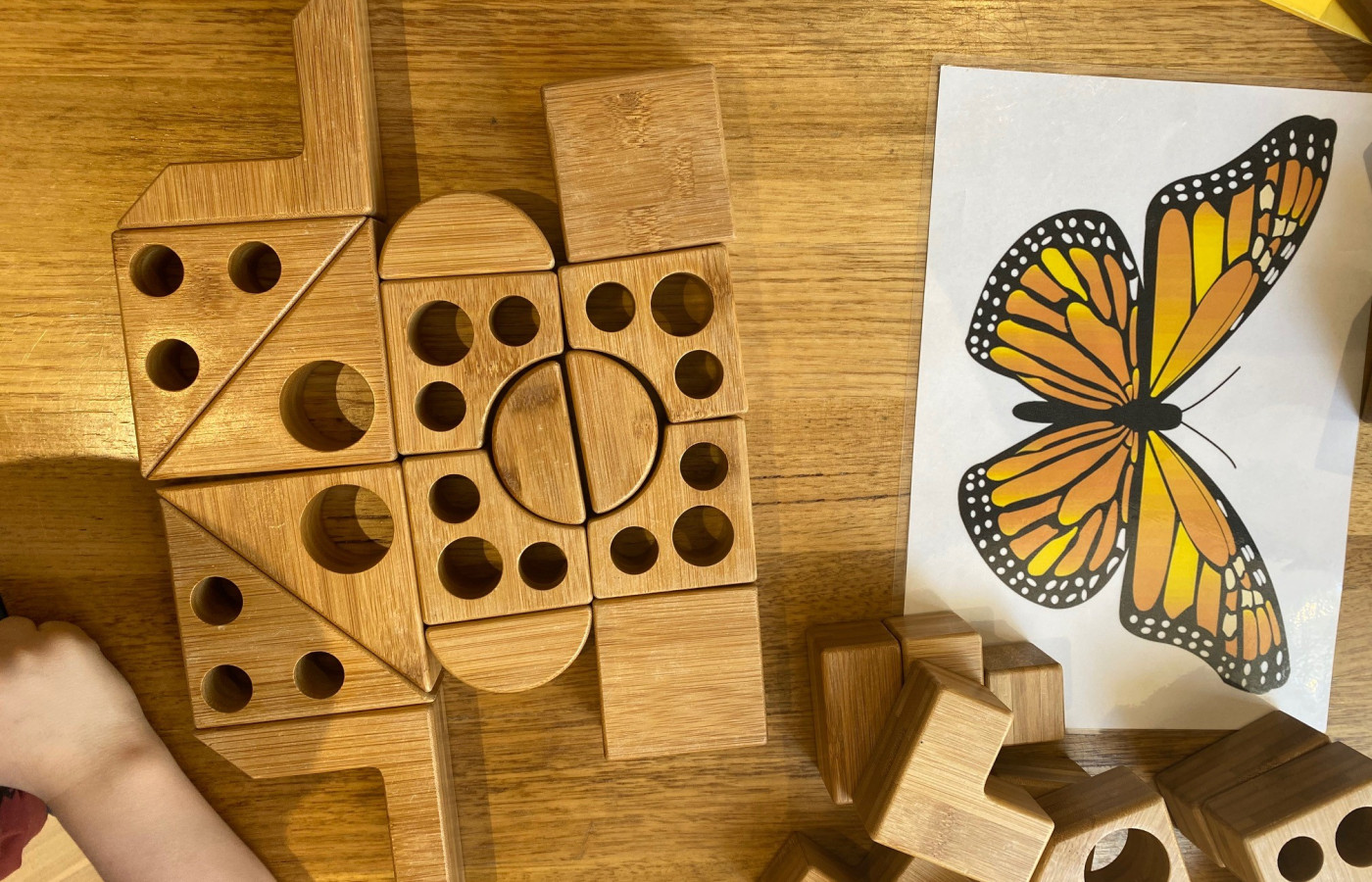Let's play with symmetry!

Let's play with symmetry!
Making symmetrical patterns with objects you have in the home.
Materials Required
- Loose parts - 2 of each (items/objects you can find around the home) - e.g. buttons, pegs, sticks, stones, leaves, Lego pieces, small blocks, spoons, beads, marbles, shells etc.
Shoe box or container to collect loose parts, Large piece of paper, textas, pencils or crayons, Piece of string or wool, Additional paper for drawing
Play experience profile
-
Age:
-
Min Playtime15 - 30 Minutes
-
Skills
-
Energy LevelQuiet Play
-
Messiness Rating
-
EYLF Outcomes
Play Experience Preparation
Loose parts box or container - Collect loose parts in the home - go on a hunt indoors and outdoors, including items that are the same. - On a large piece of paper draw a line down the middle OR use a piece of string or wool on the table or floor.Experience Steps
- Using the large piece of paper draw a line down the middle.
- Using your items from your loose parts box, create a reflective symmetrical pattern with your child -You make one side and help your child make the reflection on the other side.
- Try making different symmetrical patterns with different objects/items from your loose parts box.
- Have your child represent it by drawing it.
- Use a piece of string or wool to represent the line of symmetry down the middle of the table or floor.
- Place items on one side and help your child make the reflection on the other side of the string line.
- Try making more symmetrical patterns with your child without the line down the middle.
- Try drawing symmetrical patterns with lines and shapes.

What to talk about, or questions to ask during the experience
- What do you think goes over here?
- Let's make a reflection.
- This side is the same as this side. Just like a butterfly.
- I wonder what we need to make a reflection of this?
- Tell me about what you have made.
- This is symmetrical.
- This is called symmetry.
- This side reflects this side.
Build on this...
- Go on a symmetry hunt inside and outside the home - look for symmetry in nature.
- Use digital technology (e.g. mobile phone, computer) to search for other examples of symmetry in human-made buildings and in nature.
- Explore symmetry in construction activities (e.g. blocks, Lego).
- Take photos of symmetry in nature.
- Explore reflections using a mirror.
WHO guidelines for physical activity and sedentary behaviour
Provide evidence-based public health recommendations for children, adolescents and adults on physical activity.
Learn more
Provide evidence-based public health recommendations for children, adolescents and adults on physical activity. Learn more
Walking around the house inside and outside looking for loose parts and symmetrical patterns promotes physical activity.
EYLF Outcomes
The Early Years Learning Framework has been designed for use by early childhood educators working in partnership with families, children’s first and most influential educators.
View PDF
The Early Years Learning Framework has been designed for use by early childhood educators working in partnership with families, children’s first and most influential educators. View PDF
- Children develop dispositions for learning such as curiosity, cooperation, confidence, creativity, commitment, enthusiasm, persistence, imagination and reflexivity
- Children begin to understand how symbols and pattern systems work
- Children develop a range of skills and processes such as problem solving, inquiry, experimentation, hypothesising, researching and investigating
EYLF Principle
Principle 3: High expectations and equity. Children progress well when they, their parents and educators hold high expectations for their achievement in learning.
EYLF Practice
Practice: Learning through play. Play can expand children’s thinking and enhance their desire to know and to learn. In these ways play can promote positive dispositions towards learning. Children’s immersion in their play illustrates how play enables them to simply enjoy being.
Symmetry plays an important role in later mathematical understandings and is an important component of children's spatial development (Zingrone, 2014).
Zingrone. (2014). The Construction of Symmetry in Children and Adults. The Journal of Genetic Psychology, 175(2), 91–104. https://doi.org/10.1080/00221325.2013.799058
https://education.nsw.gov.au/campaigns/mathematics/everyday-maths#undefined
https://www.vic.gov.au/how-build-your-childs-numeracy-skills-birth-year-2
https://www.earlystartdiscoveryspace.edu.au/do-it-at-home-mandala-making/ Create a symmetrical pattern with Emily at the Discovery Space, Early Start, University of Wollongong.
Author:


